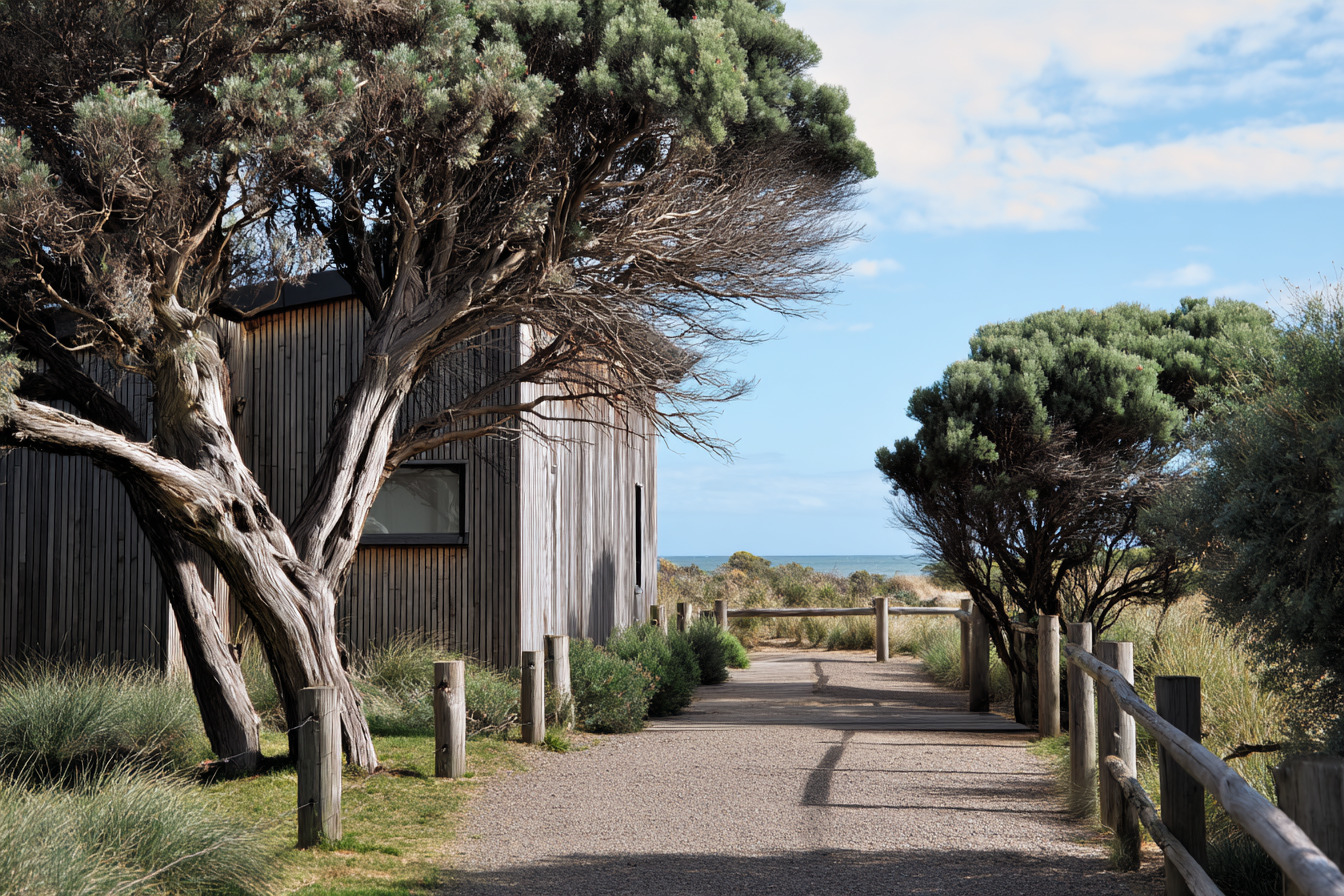
Story
Rye: From Rural Roots to Peninsula Icon
Reflective, timeless and deeply rooted in the Peninsula’s character, Rye has quietly grown from a rural township into a beloved holiday destination. For many property owners in Rye, the story is one of changing horizons — how farmland and lime-burners’ kilns gave way to holiday homes, weekend escape culture, and a demographic that values views, calm and coastal elegance.
The Early Days: Lime, Fires, Farms
Rye’s origins go back to the 1860s, when lime-burning, timber, and small-scale farming were its lifeblood. The land was split into large parcels; W. A. Blair, a lime merchant, held much of it. Lime kilns and bushfire fuel sources (notably ti tree wood) were common, servicing Melbourne’s early construction and baking demands.
(Wikipedia)
Because transport was slow and paths rough, Rye stayed somewhat remote through the late 1800s. Small guesthouses and foreshore day-trippers appeared, but until cars became common, Rye remained mostly rural.
(Victorian Collections)
Becoming a Holiday Place
With motor cars becoming more reliable in the 1920s-30s, Melburnians and other Victorian holiday-makers found they could travel further in a day. Foreshore camping and caravan parks sprouted. Rye’s bay beach, safe shallow waters, and holiday flats followed.
(Victorian Places)
Community infrastructure followed too — reserves, sports grounds, piers, and foreshore amenities — making Rye more than just a place to visit; it became a place people wanted to stay.
Who the Holiday Makers Are
Traditionally, holiday-makers in Rye came from Melbourne: families, older couples, weekend visitors who prefer peace over bustle. The “Melburnite holiday home” is a classic Rye motif — beach-side, modest in earlier decades, increasingly premium in recent years.
Over time, the profile has shifted: retirees, remote workers, higher-income brackets seeking second homes, people drawn by views, sea air and lifestyle, not just beach access.
Demographics Then & Now
- Population growth: from a few hundred in the 1900s to ~7,500 in 2001; now 9,438 (2021 Census).
- Median age: ~51 vs Victorian average of 38 — retirees & seasonal occupiers dominate.
- Households: more older couples, fewer young families; more holiday or second homes.
(ABS Census)
Looking Forward: What Property Owners Value
For those who own homes in Rye now, what matters is connection — to landscape, to history, and to quality. Specs that matter:
- Coastal views, privacy, gardens or natural bush around.
- Heritage character or respectful design.
- Outdoor living: verandahs, decks, foreshore walks, safe beaches.
- Materials that withstand coastal climate.
